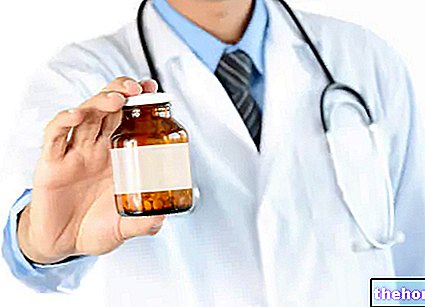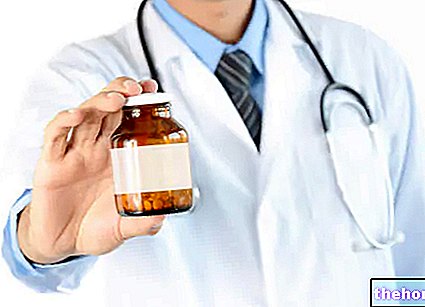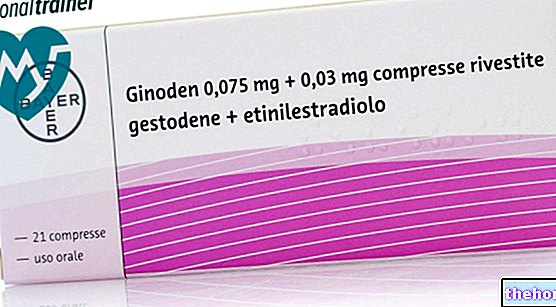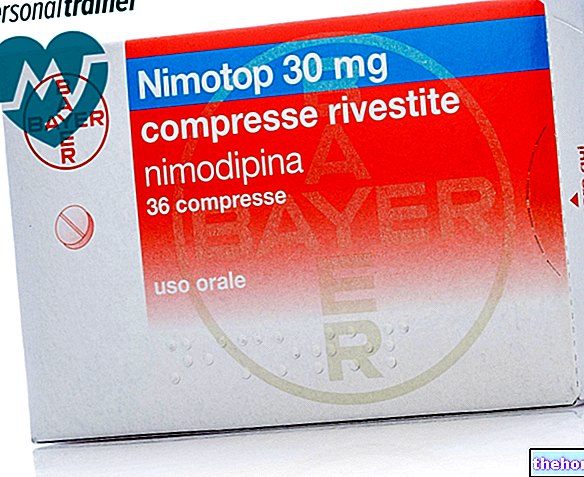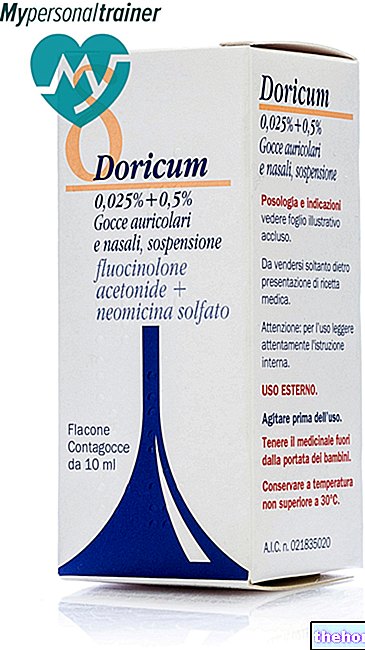Active ingredients: Estriol
GELISTROL 50 mcg / g Vaginal Gel
Source Package Leaflet: AIFA (Italian Medicines Agency). Content published in January 2016. The information present may not be up-to-date.
To have access to the most up-to-date version, it is advisable to access the AIFA (Italian Medicines Agency) website. Disclaimer and useful information.
01.0 NAME OF THE MEDICINAL PRODUCT -
GELISTROL 50 mcg / G VAGINAL GEL
02.0 QUALITATIVE AND QUANTITATIVE COMPOSITION -
1 g of vaginal gel contains 50 mcg of estriol.
Excipients: 1 g of vaginal gel contains 1.60 mg of sodium methyl parahydroxybenzoate and 0.20 mg of sodium propyl parahydroxybenzoate.
For a full list of excipients, see section 6.1.
03.0 PHARMACEUTICAL FORM -
Vaginal gel
Homogeneous, colorless, clear to slightly translucent gel.
04.0 CLINICAL INFORMATION -
04.1 Therapeutic indications -
Local treatment of vaginal dryness in postmenopausal women with vaginal atrophy.
04.2 Posology and method of administration -
Gelistrol 50 mcg / g vaginal gel is an estrogen-only product for vaginal use. Gelistrol should be introduced into the vagina using a dose-indicated applicator and carefully following the "Instructions for Use" in the package leaflet.
One dose of applicator (applicator filled up to the notch) delivers a dose of 1 g of vaginal gel containing 50 mcg of estriol.
For initiation and continuation of treatment of postmenopausal symptoms, the lowest effective dose for the shortest duration of action should be used (see also section 4.4.)
Initial treatment: One dose of vaginal gel applicator per day for 3 weeks (best at bedtime).
As a maintenance treatment, a dose of vaginal gel applicator twice a week is recommended (best at bedtime). An assessment of the continuation of treatment should be made by the physician after 12 weeks.
A missed dose should be given as soon as the patient remembers, unless 12 hours have already passed. In the latter case the missed dose should be omitted, and the next dose should be given at the normal time.
04.3 Contraindications -
• Breast cancer diagnosed or suspected, including in the past
• Diagnosed or suspected estrogen-dependent malignancy (eg endometrial cancer)
• Undiagnosed genital bleeding
• Untreated endometrial hyperplasia
• Idiopathic venous thromboembolism, current or in the past (deep vein thrombosis, pulmonary embolism)
• Current or recent arterial thromboembolic disease (eg angina, myocardial infarction)
• Acute liver disease or history of liver disease (up to normalization of liver function tests)
• Hypersensitivity to the active substance or to one of the excipients
• Porphyria
04.4 Special warnings and appropriate precautions for use -
For the treatment of postmenopausal symptoms, local estrogen therapy should only be initiated in the presence of symptoms that adversely affect quality of life. As with all estrogen products, a careful "benefit and risk assessment" should be made at least annually. Therapy should be continued as long as the benefits outweigh the risks.
Gelistrol 50 mcg / g vaginal gel should not be combined with systemic estrogen preparations, as safety and risk studies related to estrogen concentrations achieved in combination treatment have not been performed.
The intravaginal applicator can cause modest local trauma, especially in women with severe vaginal atrophy.
Warnings regarding excipients
Gelistrol 50 mcg / g vaginal gel contains sodium methyl parahydroxybenzoate (E 219) and sodium propyl parahydroxybenzoate (E 217), which can cause allergic reactions (possibly delayed).
Medical examination / treatment follow-up
Before initiating or resuming estriol treatment, a complete personal and family medical history should be taken. A general medical and gynecological examination (including pelvic and breast examination) should be performed, taking into account the patient's disease history and of the contraindications and warnings related to the treatment.
During treatment, it is recommended to carry out periodic checks, the frequency and nature of which must be adapted to the individual patient. Patients should be informed of the type of any breast changes that should be reported to the doctor or nurse.
Investigations, including mammography, should be performed in accordance with currently accepted screening practices, modified according to individual clinical needs.
In case of vaginal infections, these should be treated before starting therapy with Gelistrol 50 mcg / g vaginal gel.
Clinical conditions that require further checks
If one or more of the following conditions are present, have occurred in the past and / or have worsened during pregnancy or during previous hormone treatment, the patient should be carefully monitored. It should be borne in mind that these conditions may recur or worsen during treatment with Gelistrol 50 mcg / g vaginal gel:
• Leiomyomas (uterine fibroids) or endometriosis
• History of thromboembolic disorders, or presence of risk factors for such disorders (see "Venous thromboembolic disorder" section below)
• Presence of risk factors for estrogen-dependent tumors, for example a family history of breast cancer
• Hypertension
• Liver problems (eg hepatic adenoma)
• Diabetes mellitus with or without vascular involvement
• Cholelithiasis
• Migraine or (severe) headache
• Systemic lupus erythematosus (SLE)
• History of endometrial hyperplasia (see section "Endometrial hyperplasia")
• Epilepsy
• Asthma
• Otosclerosis
Reasons justifying the immediate suspension of the treatment
Therapy must be suspended if a contraindication is discovered, and in the following situations:
• Jaundice or worsening of liver function
• Significant increase in blood pressure
• New onset of migraine-type headache
• Pregnancy
Endometrial hyperplasia
The risk of endometrial hyperplasia and carcinoma in oral estrogen-only treatment depends on both the duration of treatment and the dose of estrogen. No increased risk of endometrial hyperplasia or uterine cancer was attributed to treatment with vaginal estriol. However, if chronic treatment is required, periodic checkups are recommended, with particular attention to any symptoms suggesting endometrial hyperplasia or endometrial malignancy.
If even minor bleeding from the vagina occurs at any time during therapy, the cause must be investigated. This investigation may include an endometrial biopsy, which excludes an endometrial tumor.
Uncontrolled estrogen stimulation may result in premalignant transformation in residual foci of endometriosis. Therefore, caution is advised when using this product in women who have undergone hysterectomy for endometriosis, especially if they are known to have residual endometriosis.
Cancer of the breast, uterus and ovary
Systemic estrogen treatment may increase the risk of certain types of cancer, particularly cancers of the uterus, ovary and breast. Gelistrol 50 mcg / g vaginal gel, which contains a low dose of estriol and is administered locally, is not thought to increase the risk of cancer.
Venous thromboembolic disorder, stroke and coronary artery disease
Hormone replacement therapy with systemic preparations is associated with an increased risk of venous thromboembolism (VTE), stroke and coronary artery disease. Gelistrol 50 mcg / g vaginal gel, which contains a low dose of estriol and is administered locally, is not thought to lead to an increased risk of VTE, stroke and coronary artery disease.
Generally recognized risk factors for VTE include a positive personal or family history, severe obesity (BMI> 30 kg / m²) and systemic lupus erythematosus (SLE), while there is no consensus on the possible role of varicose veins. . Careful supervision in these patients is recommended.
Other conditions
Systemic estrogens can cause fluid retention or increased plasma triglycerides, so patients with heart disease or with impaired renal function or with pre-existing hypertriglyceridaemia should be carefully observed during the first weeks of treatment. Gelistrol 50 mcg / g vaginal gel contains a low dose of estriol and is administered locally; therefore no systemic effects are expected.
Patients with severe renal insufficiency should be carefully monitored, as the circulating estriol level can be expected to increase.
04.5 Interactions with other medicinal products and other forms of interaction -
Interaction studies between Gelistrol 50 mcg / g vaginal gel and other medicinal products have not been performed. Since Gelistrol is administered locally at a low dose, no clinically relevant interactions are expected.
04.6 Pregnancy and breastfeeding -
Pregnancy
Gelistrol 50 mcg / g vaginal gel is not indicated during pregnancy.
If pregnancy occurs during treatment with Gelistrol 50 mcg / g vaginal gel, treatment should be stopped immediately.
No clinical data are available on pregnancies exposed to estriol treatment.
The results of most epidemiological studies on random fetal exposure to estrogen do not indicate any teratogenic or foetotoxic effects.
Feeding time
Gelistrol 50 mcg / g vaginal gel is not indicated during lactation.
04.7 Effects on ability to drive and use machines -
Gelistrol 50 mcg / g vaginal gel has no influence on the ability to drive and use machines.
04.8 Undesirable effects -
Undesirable effects of estriol are reported in 3-10% of treated patients and are often transient and of mild intensity.
At the beginning of treatment, when the vaginal mucosa is still atrophic, local irritation may occur in the form of a sensation of heat and / or itching.
The undesirable effects observed in the clinical studies performed with Gelistrol 50 mcg / g vaginal gel were classified according to the frequency of occurrence:
Gelistrol is a locally administered vaginal gel with a very low amount of estriol resulting in self-limiting systemic exposure (which is almost negligible after repeated administration).
As such, Gelistrol is highly unlikely to cause the more serious side effects associated with estrogen replacement therapy.
However, other very rare reactions have been reported with systemic estrogen / progestogen therapy at higher doses, namely:
• Estrogen-dependent benign and malignant neoplasms, eg endometrial and breast cancer (see also section 4.3 "Contraindications" and 4.4. "Special warnings and special precautions for" use ")
• Venous thromboembolism, ie deep vein thrombosis of the leg or pelvis and pulmonary embolism, which are more common among women who use HRT than women who do not. For more information, see section 4.3 "Contraindications" and 4.4. "Special warnings and appropriate precautions for use"
• Myocardial infarction and stroke
• Gallbladder disease
• Skin and subcutaneous tissue disorders: chloasma, erythema multiforme, erythema nodosum, vascular purpura
• Probable dementia
04.9 Overdose -
The toxicity of estriol is very low. Overdose with Gelistrol 50 mcg / g vaginal gel with vaginal application is very unlikely. Symptoms that can occur in case of an accidentally ingested high dose are: nausea, vomiting and vaginal bleeding in women. There is no specific antidote. If necessary, symptomatic treatment should be instituted.
05.0 PHARMACOLOGICAL PROPERTIES -
05.1 "Pharmacodynamic properties -
Pharmacotherapeutic group: estrogens, ATC code: G03CA04.
Gelistrol 50 mcg / g vaginal gel contains synthetic estriol, which is chemically and biologically identical to human estriol. Estriol exerts its pharmacological and biological effects through its action on estrogen receptors (ER). Estriol has a high relative binding affinity for estrogen receptors in the bladder and vaginal tissue and relatively low binding affinity for endometrial estrogen receptors and breast tissue. For this reason, estriol binding the endometrial estrogen receptor has too short a duration to induce true proliferation when estriol is administered once a day, while its binding to the vaginal estrogen receptor is sufficient to exert a full effect on vaginal trophism, despite the " use of very low doses of estriol.
In postmenopausal women, the reduction in estrogen levels causes the genital areas to become dry, itchy and more easily irritated. Local vaginal estriol acts directly on the estrogen-sensitive tissues of the lower genitourinary tract, relieving the symptoms of vaginal atrophy. Estriol induces the normalization of the vaginal, cervical and urethral epithelium and, therefore, helps to restore the normal microflora and physiological pH in the vagina. Furthermore, estriol increases the resistance of the cells of the vaginal epithelium to infection and inflammation and reduces the incidence of urogenital disorders.
Estriol can be used to treat vaginal symptoms and disorders (vaginal dryness, itching, discomfort and pain during sexual intercourse) related to estrogen deficiency observed in menopause (both natural and surgical).
In a randomized clinical trial compared to placebo, the intravaginal application of a low dose of estriol (50 mcg for each application) results in a significant improvement in vaginal epithelial trophism, vaginal pH and signs of vaginal atrophy such as frailty, dryness and pallor of the mucous membrane, flattening of the folds. In the "symptomatic response analysis (secondary end-point), statistical significance was obtained after 12 weeks of treatment for vaginal dryness, but not for dyspareunia, vaginal itching, burning and dysuria.
05.2 "Pharmacokinetic properties -
After single administration of Gelistrol 50 mcg / g vaginal gel, estriol is rapidly absorbed, and peak plasma estriol concentrations of 106 63 pg / ml are reached 2 hours after administration (range 0.5 - 4). After peak, plasma estriol concentrations decrease exponentially with a mean half-life of 1.65 ± 0.82 hours.
After 21 days of repeated treatment with Gelistrol, absorption decreases significantly and systemic exposure to estriol is almost negligible. 24 hours after administration, estriol levels are below the limit of determination in all subjects tested.
Almost all estriol (90%) binds to albumin in plasma, while very little binds to sex hormone binding globulin (SHBG). The metabolism of estriol consists mainly of conjugation and deconjugation during the enterohepatic circulation. Estriol is mainly excreted in the urine in conjugated form. Only a small fraction (≤ 2%) is excreted via the faeces, mainly as unconjugated estriol .
05.3 Preclinical safety data -
The toxicological properties of estriol are well known. There are no preclinical data of relevance for the evaluation of safety other than those already considered in other sections of the summary of product characteristics.
06.0 PHARMACEUTICAL INFORMATION -
06.1 Excipients -
Glycerol (E 422)
Sodium methyl parahydroxybenzoate (E 219)
Sodium Propylparahydroxybenzoate (E 217)
Polycarbophil
Carbopol
Sodium hydroxide (for pH adjustment)
Hydrochloric acid (for pH adjustment)
Purified water.
06.2 Incompatibility "-
It does not apply.
06.3 Period of validity "-
2 years.
06.4 Special precautions for storage -
Store at a temperature below 25 ° C.
06.5 Nature of the immediate packaging and contents of the package -
Not all pack sizes may be marketed. Aluminum tube of 10 or 30 g.
The cardboard box containing the 10 g tube and the patient information leaflet is available in two packs:
• 1 sealed blister containing 10 disposable cannulas with a fill mark and a reusable plunger
OR
• 1 sealed pouch containing 1 cannula with a fill mark and a plunger, both reusable.
The cardboard box containing the 30 g tube and patient information leaflet is available in two packs:
• 3 sealed blisters each containing 10 disposable cannulas with a fill mark and a reusable plunger
OR
• 1 sealed pouch containing 1 cannula with a fill mark and a plunger, both reusable.
06.6 Instructions for use and handling -
No special requirements.
07.0 HOLDER OF THE "MARKETING AUTHORIZATION" -
Lifepharma S.p.A
Via dei Lavoratori, 54
20092 Cinisello Balsamo (MI)
Dealer for sale in Italy: Italfarmaco S.p.A.
08.0 MARKETING AUTHORIZATION NUMBER -
AIC n. 040650018: 30 g tube with 30 disposable cannulas
AIC n. 040650044: 30g tube with 1 reusable cannula
AIC n. 040650020: 10 g tube with 10 disposable cannulas
AIC n. 040650032: 10 g tube with 1 reusable cannula
09.0 DATE OF FIRST AUTHORIZATION OR RENEWAL OF THE AUTHORIZATION -
AIFA Resolution no. 129/2012 of 23/01/2012

